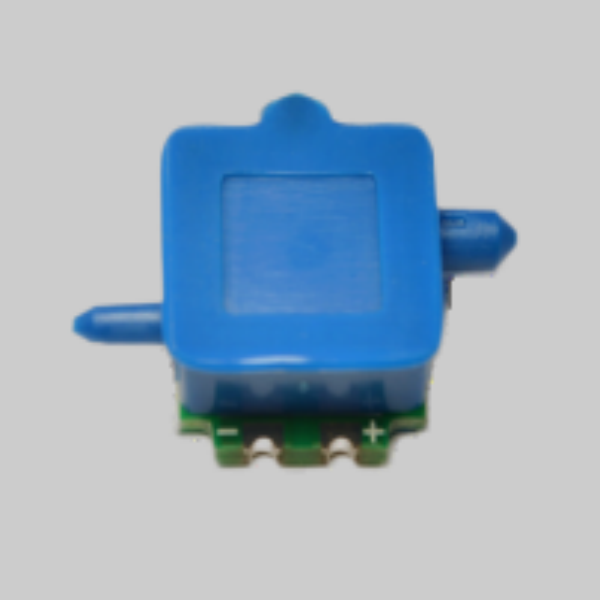

 News
News Industry News
Industry NewsIn modern society, the demand for alcohol concentration detection is growing, which plays a vital role in ensuring road traffic safety, industrial production, health care and other fields. As an efficient and accurate detection tool, electrochemical alcohol sensor has become the first choice in many application scenarios with its unique working principle and excellent performance.
Working principle
The work of electrochemical alcohol sensor is based on electrochemical reaction. From its internal structure, it mainly includes working electrode, reference electrode and counter electrode, and the electrode is immersed in a specific electrolyte. When the gas containing alcohol molecules contacts the sensor, the alcohol molecules will undergo oxidation reaction on the surface of the working electrode. Taking the common acidic electrolyte system as an example, alcohol (C₂H₅OH) loses electrons on the working electrode and is oxidized to acetaldehyde (CH₃CHO). The reaction equation is: C₂H₅OH - 2e⁻ = CH₃CHO + 2H⁺.
These lost electrons will flow to the counter electrode through the external circuit, where oxygen gains electrons to undergo a reduction reaction. For example, in an acidic electrolyte, the reaction is: O₂ + 4H⁺ + 4e⁻ = 2H₂O. Thus, a current loop is formed between the working electrode and the counter electrode.
According to Faraday's law, the current generated in an electrochemical reaction is proportional to the amount of substance involved in the reaction. Therefore, the current intensity generated by the oxidation reaction of alcohol on the working electrode is positively correlated with the concentration of alcohol in the gas. By measuring the magnitude of this current, the concentration of alcohol in the gas can be accurately calculated. The reference electrode provides a stable potential reference throughout the process to ensure the accuracy and stability of the measurement.
Application Areas
Traffic safety: In the field of road traffic safety, electrochemical alcohol sensors are the key technical means for law enforcement departments to detect drunk driving. The core component of the breath alcohol detector used by traffic police is the electrochemical alcohol sensor. When the driver blows into the detector, the alcohol molecules in the exhaled gas are captured by the sensor and undergo an electrochemical reaction. The instrument quickly measures the generated current, and then quickly and accurately displays the alcohol concentration in the driver's exhaled gas. Based on this concentration value, law enforcement officers can determine whether the driver is driving under the influence of alcohol, thereby effectively curbing drunk driving and ensuring driving safety on the road.
Industrial safety: In some industrial sites involving flammable and explosive chemicals, such as petrochemicals, pharmaceuticals and other industries, alcohol is a common organic solvent or production raw material, and its concentration monitoring in the air is crucial. Once the alcohol concentration exceeds the standard, it may cause a fire or even an explosion accident when encountering a fire source. The electrochemical alcohol sensor can monitor the alcohol concentration in the working environment in real time. When the concentration reaches the preset alarm threshold, it will immediately issue an alarm to remind the staff to take corresponding measures, such as strengthening ventilation and stopping operations, so as to effectively prevent the occurrence of safety accidents and ensure the safety of industrial production.
Health care: In the medical field, electrochemical alcohol sensors also have important applications. For example, in some emergency scenarios, doctors need to quickly understand whether the patient has drunk alcohol and how much alcohol they have drunk in order to formulate an accurate treatment plan. By using a portable electrochemical alcohol detector to test the patient's breath, the doctor can obtain relevant information in a short time, which can save precious time for subsequent diagnosis and treatment. In addition, in the process of certain drug treatments, alcohol may interact with the drug, affecting the treatment effect or even causing adverse reactions. Therefore, monitoring the patient's drinking situation can also help doctors reasonably adjust the medication plan to ensure the safety and effectiveness of the treatment.
Recommended product
| Model | Detection range | Max range | Sensitivity | Zero drift(-20℃~40℃) | Life(in air) | Picture |
| MQ-E2-C2H5OH-13×13 | (0~1.0)mg/L | 2.0mg/L | (15~125)µA/(mg/L) | -0.01 mV~0.01mV | 3 years |  |
| MQ-E2-C2H5OH-Ф16 | (0~1.0)mg/L | 2.0mg/L | (6±2)µA/(mg/L) | -0.01 mV~0.01mV | 2 years |
Electrochemical alcohol sensors play an indispensable role in modern society's security, industrial production, medical health, etc. with their unique working principle and wide application fields. With the continuous development and innovation of technology, it is believed that it will show more excellent performance in the future and bring more convenience and safety to people's lives.
If you are interested in our alcohol sensors, pls feel free to contact us for more informations:
ShanXi TengXing Sensor TechnologyCo.,Ltd
Web: www.tensensor.com
Email: [email protected]